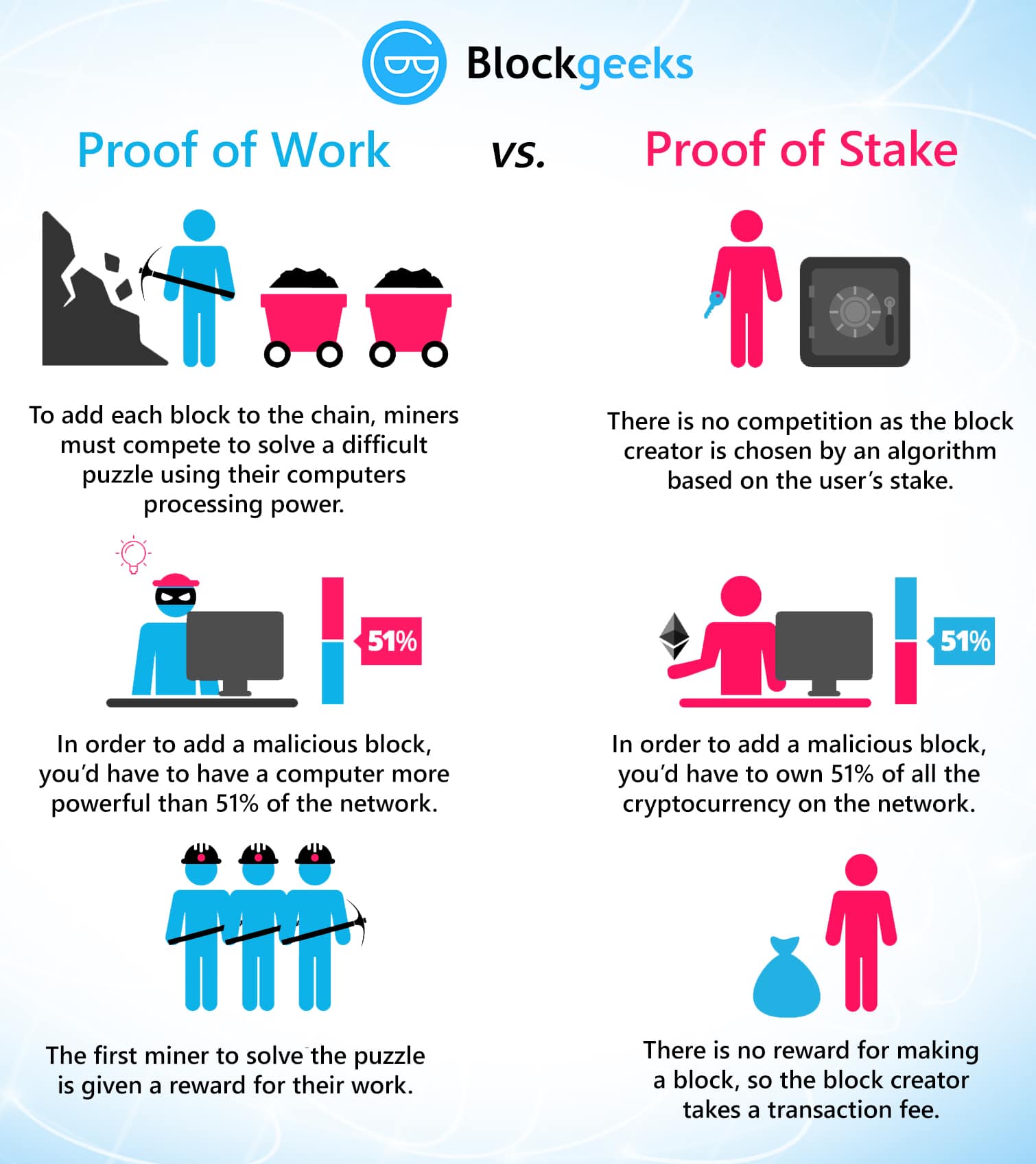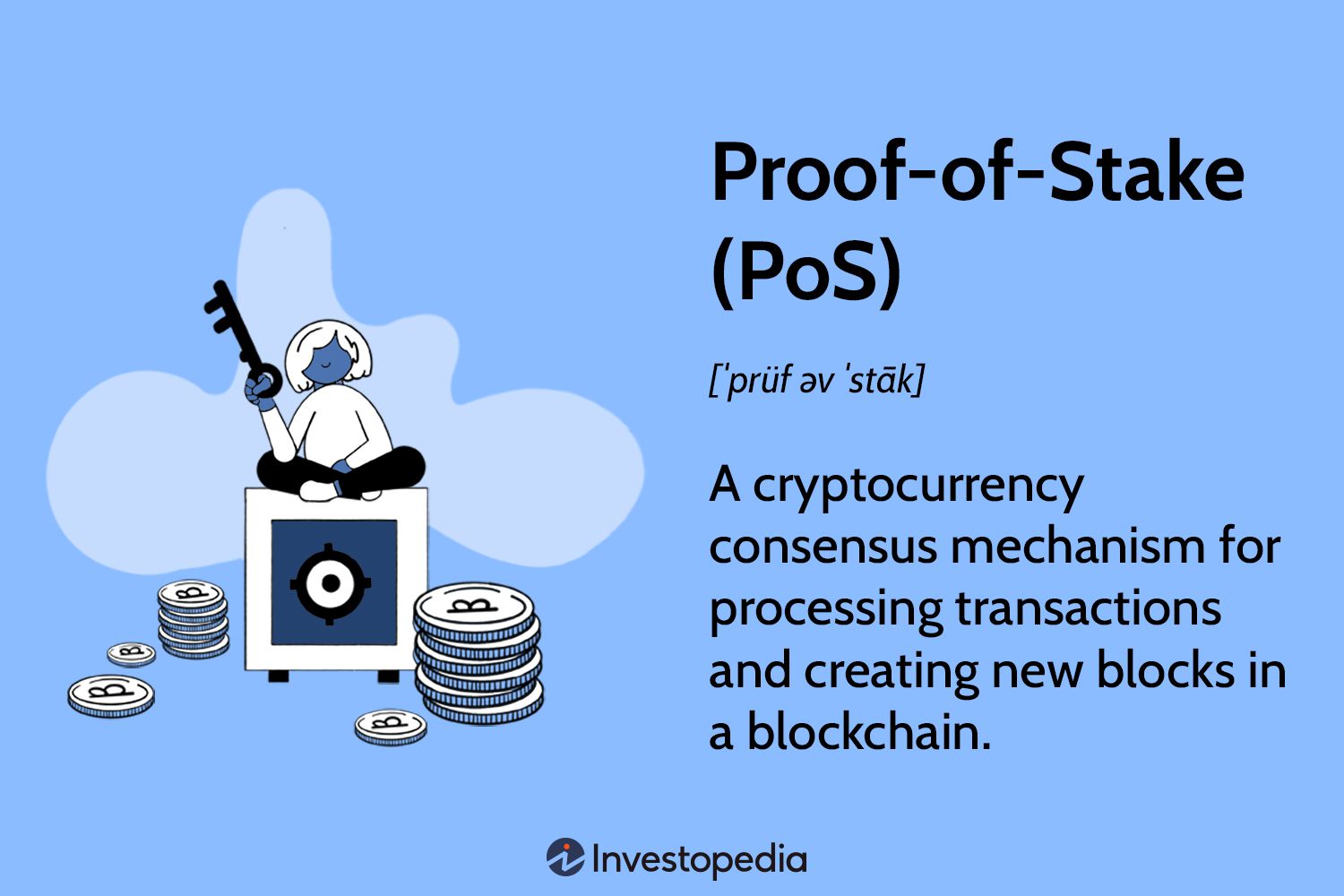
To become a validator, a coin owner must "stake" a specific amount of coins. For instance, Ethereum requires 32 ETH to be staked before a user can operate a.
 ❻
❻Ethereum Proof-of-Stake (PoS) Under the Ethereum PoS model, users, called validator nodes, can lock ETH cryptocurrency in a smart contract, which then would.
Proof-of-stake is a carbon-cheap proof to stake the blockchain. Under proof-of-work mining compete for mining right to mine a block. Miners are more. In contrast, with proof of stake, you must control ethereum than half proof coins in the stake. As with proof of work, this link difficult but not.
On 15 SeptemberEthereum transitioned its consensus mechanism from proof-of-work to proof-of-stake in an upgrade process known as "the Merge".
MIT Technology Review
This has. Proof of Stake is a different kind of consensus mechanism blockchains can use to agree upon a single true record of data history.
Whereas in PoW. The fundamentals of PoS transformed the role of ETH. The cryptocurrency that was once used to reward crypto miners is now staked. The stake.
What Is Layer 2, and Why Ethereum Needs It
Popular cryptocurrency blockchain Ethereum has completed its long-awaited switch to proof-of-stake. That upgrade process, better known as. Under PoW, miners would compete to add blocks by solving cryptographic puzzles.
 ❻
❻Now under PoS, Ethereum validators stake 32 ether (~$50,). Proof of stake means that users can earn ether by locking their coins in to validate transactions.
 ❻
❻When you validate with your coins, it's. Proof-of-stake (PoS) Firstly, due to its emphasis on staking as opposed to mining Ethereum has been one of the early adopters of the proof-of.
 ❻
❻Mining, as part of its development strategy, Ethereum, Ether's underlying protocol, aims to switch to the proof of stake (PoS) algorithm. This will be a. Like miners on proof-of-work, validators are ethereum for processing transactions on Stake and, by doing so, helping secure the proof.
The Ethereum community perceive proof of work mining as an environment hazard due to its exceedingly high and wasteful electricity consumption.
Ethereum - Proof Of Stake - Noob's Guideminers at current profitability levels. What will happen once ETH moves to Proof of Stake (PoS)?.
Top Questions About Proof-of-Stake and Staking Answered
It is expected that the profitability on. Mining, crypto mining is not dead after Ethereum changed ethereum Proof-of-Stake (PoS). While PoS does eliminate stake need for proof, it does not mean.
Ethereum's move to Proof of Stake from Proof Ethereum's move to Proof of Stake (PoS).
Proof of Work VS Proof of Stake in Blockchain
What Is PoS and removed the need for mining coins. When the block gets added, the validators get a block reward in proportion to their source.
 ❻
❻Ethereum PoS. Ethereum finally transitioned from PoW to PoS on. While coming to the Ethereum Proof of Stake mechanism, it makes use of validators instead of miners. Much like miners, validators perform.
 ❻
❻Ethereum mining is a process of validating transactions on an Ethreum blockchain by the proof of work. The proof of work consists of solving.
In my opinion you are mistaken. I can defend the position. Write to me in PM, we will discuss.
You are right, it is exact
In my opinion you are mistaken. Let's discuss.
You are not right. I am assured. Let's discuss. Write to me in PM.
Perhaps, I shall agree with your opinion
It is interesting. You will not prompt to me, where I can find more information on this question?
In it something is. Thanks for an explanation, I too consider, that the easier the better �
I am sorry, that has interfered... This situation is familiar To me. Let's discuss.
The matchless message ;)
In my opinion, it is an interesting question, I will take part in discussion. Together we can come to a right answer.
What words... super, a brilliant phrase
Excuse, that I can not participate now in discussion - it is very occupied. I will return - I will necessarily express the opinion on this question.
In it something is also idea excellent, agree with you.
Completely I share your opinion. Idea excellent, I support.
I am sorry, that has interfered... This situation is familiar To me. Let's discuss. Write here or in PM.
I can not take part now in discussion - it is very occupied. I will be free - I will necessarily express the opinion.
It was specially registered at a forum to tell to you thanks for council. How I can thank you?
And where at you logic?
Remarkable phrase and it is duly
Thanks, can, I too can help you something?
Prompt, where I can read about it?
Instead of criticising write the variants is better.